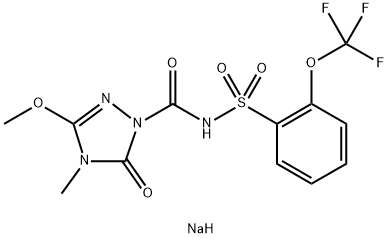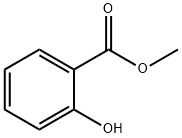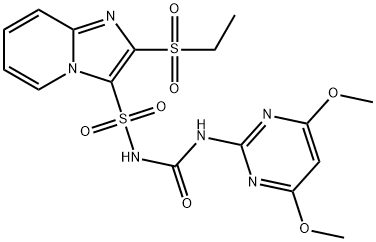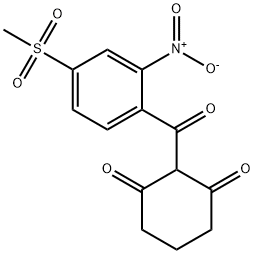Flucarbazone sodium
- CAS NO.:181274-17-9
- Empirical Formula: C12H12F3N4NaO6S
- Molecular Weight: 420.29
- MDL number: MFCD03792909
- SAFETY DATA SHEET (SDS)
- Update Date: 2024-12-18 14:15:30

What is Flucarbazone sodium?
The Uses of Flucarbazone sodium
Herbicide.
The Uses of Flucarbazone sodium
Flucarbazone-sodium is a herbicide.
Definition
ChEBI: Flucarbazone-sodium is an organic sodium salt resulting from the formal reaction of the sulfonamide amino group of flucarbazone with 1 mol eq. of sodium hydride. An acetolactate synthase inhibitor, it is used as a herbicide to control grass weeds in cereal crops. Not approved for use within the European Union. It has a role as an EC 2.2.1.6 (acetolactate synthase) inhibitor, a herbicide and an agrochemical. It contains a flucarbazone(1-).
Hazard
Moderately toxic.
Properties of Flucarbazone sodium
| Melting point: | 200° (dec) |
| Density | 1.59 |
| storage temp. | Inert atmosphere,Room Temperature |
| solubility | Solubilities in organic solvents (g/l at 20 °C) Dimethylsulfoxide: 250 Poly(ethylene glycol): 48 Acetonitrile: 6.4 2‐Propanol: 0.27 Xylene: <0.1 |
| form | Solid |
| pka | 1.9(at 25℃) |
| color | White to Off-White |
| Water Solubility | Solubility in water (at 20 °C) : Water solubility is 44 g/l in unbuffered aqueous solutions in the range pH 4-9. Solubility is not influenced by pH in the range pH 4-9 |
| Stability: | Hygroscopic |
| EPA Substance Registry System | Flucarbazon-sodium (181274-17-9) |
Safety information for Flucarbazone sodium
| Signal word | Warning |
| Pictogram(s) |
 Exclamation Mark Irritant GHS07 |
| GHS Hazard Statements |
H412:Hazardous to the aquatic environment, long-term hazard |
| Precautionary Statement Codes |
P273:Avoid release to the environment. |
Computed Descriptors for Flucarbazone sodium
New Products
Tert-butyl bis(2-chloroethyl)carbamate 4-Methylphenylacetic acid N-Boc-D-alaninol N-BOC-D/L-ALANINOL N-octanoyl benzotriazole 3-Morpholino-1-(4-nitrophenyl)-5,6-dihydropyridin- 2(1H)-one Furan-2,5-Dicarboxylic Acid DIETHYL AMINOMALONATE HYDROCHLORIDE 1,1’-CARBONYLDIIMIDAZOLE R-2-BENZYLOXY PROPIONIC ACID 1,1’-CARBONYLDI (1,2-4 TRIAZOLE) N-METHYL INDAZOLE-3-CARBOXYLIC ACID (2-Hydroxyphenyl)acetonitrile 4-Bromopyrazole 5-BROMO-2CYANO PYRIDINE 5,6-Dimethoxyindanone 5-broMo-2-chloro-N-cyclopentylpyriMidin-4-aMine 2-(Cyanocyclohexyl)acetic acid 4-methoxy-3,5-dinitropyridine 1-(4-(aminomethyl)benzyl)urea hydrochloride 2-aminopropyl benzoate hydrochloride diethyl 2-(2-((tertbutoxycarbonyl)amino) ethyl)malonate tert-butyl 4- (ureidomethyl)benzylcarbamate Ethyl-2-chloro((4-methoxyphenyl)hydrazono)acetateRelated products of tetrahydrofuran








You may like
-
 2033-24-1 98%View Details
2033-24-1 98%View Details
2033-24-1 -
 1975-50-4 98%View Details
1975-50-4 98%View Details
1975-50-4 -
 2-HYDROXY BENZYL ALCOHOL 98%View Details
2-HYDROXY BENZYL ALCOHOL 98%View Details
90-01-7 -
 2-Chloro-1,3-Bis(Dimethylamino)Trimethinium Hexafluorophosphate 221615-75-4 98%View Details
2-Chloro-1,3-Bis(Dimethylamino)Trimethinium Hexafluorophosphate 221615-75-4 98%View Details
221615-75-4 -
 61397-56-6 CIS BROMO BENZOATE 98%View Details
61397-56-6 CIS BROMO BENZOATE 98%View Details
61397-56-6 -
 14714-50-2 (2-Hydroxyphenyl)acetonitrile 98+View Details
14714-50-2 (2-Hydroxyphenyl)acetonitrile 98+View Details
14714-50-2 -
 118753-70-1 98+View Details
118753-70-1 98+View Details
118753-70-1 -
 733039-20-8 5-broMo-2-chloro-N-cyclopentylpyriMidin-4-aMine 98+View Details
733039-20-8 5-broMo-2-chloro-N-cyclopentylpyriMidin-4-aMine 98+View Details
733039-20-8
Statement: All products displayed on this website are only used for non medical purposes such as industrial applications or scientific research, and cannot be used for clinical diagnosis or treatment of humans or animals. They are not medicinal or edible.